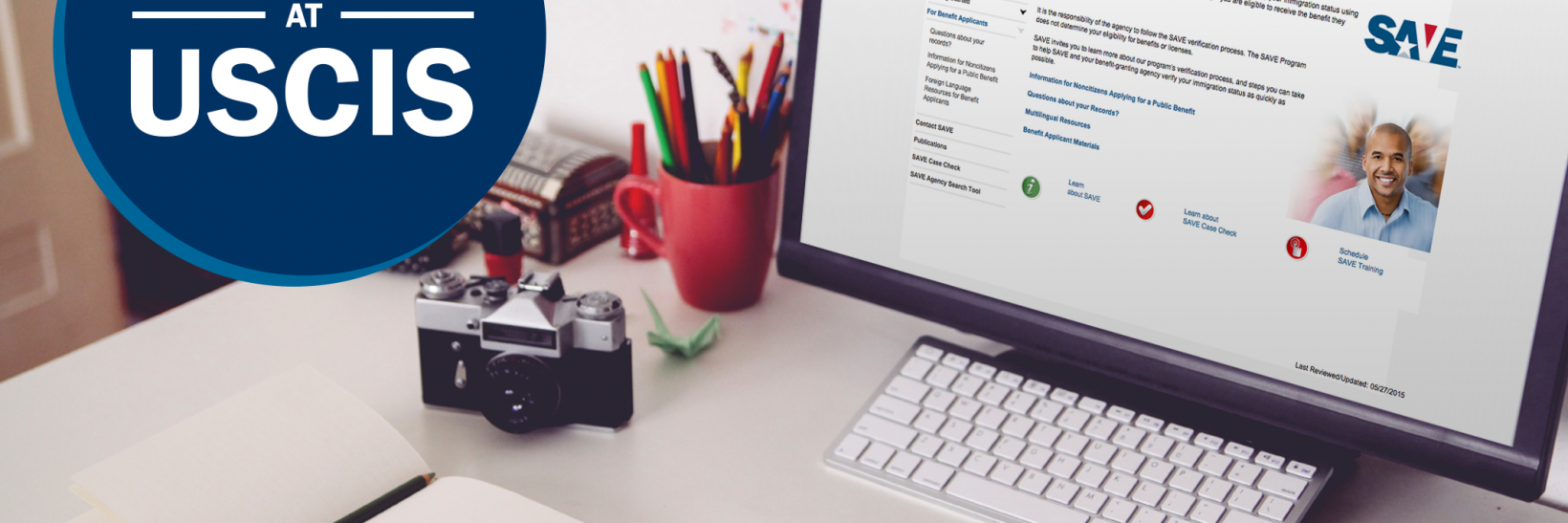
USCIS Explains The SAVE Program
Are you an F or M student applying for benefits while in the United States, such as a state driver’s license or Social Security number? If so, you should speak with your designated school official (DSO) to ensure you are eligible to apply for the benefit and have the proper paperwork.
Most federal, state or local benefit-granting agencies have to confirm your immigration status or U.S. citizenship before deciding whether to grant the benefit you seek. Many of these agencies use the U.S. Citizenship and Immigration Services’ (USCIS) Systematic Alien Verification for Entitlements (SAVE) Program to conduct this verification of immigration status.
You may be able to follow the progress of your status verification check online using SAVE CaseCheck.
We recently added the “Checking Your SAVE Status” page on Study in the States. To help you better understand this service and how it may apply to you, we asked our partners at USCIS to answer a few questions about the program.
What is SAVE?
SAVE is a U.S government information service that verifies the status of foreign-born benefit applicants—such as international students—seeking a public benefit or license such as applying for a Social Security number. Keep in mind that SAVE merely verifies your status; it does not decide whether to grant you the benefit. Only the benefit granting agency can decide whether to approve or deny your application for the benefit it administers.
SAVE usually verifies your status in just a few seconds. But if SAVE cannot verify your status immediately, it will let the benefit granting agency know that it needs more time to process the request. In these situations, which can take between three and 20 business days, it is easy for you to check the status of the verification request using SAVE CaseCheck. You can log in to CaseCheck on the SAVE website at your leisure and enter your date of birth in combination with the ID number on your immigration document, such as an I-94 or an Employment Authorization Document.
CaseCheck will then let you know when the SAVE Program has completed the verification case. So instead of making repeated trips to the agency to learn if your verification is complete, you will know when it is time to return by checking online first. This will save you time.
What Can I Do to Make Sure My Status is Verified in SAVE?
Before applying for a public benefit or license, like a social security number or state driver’s license, it is important that your student record is correct and that you submit the proper documents. Additionally, you should only use your most current documents when applying for a benefit. For example, if you have received a new Employment Authorization Card, be sure to present the most recent card rather than an old one that may have expired.
What Documents Can Be Used to Verify My Status in SAVE?
A few common examples of documents you can present when you apply for a benefit that can be used by SAVE to verify your status include your Form I-20, "Certificate of Eligibility for Nonimmigrant Student Status;" Form I-94, “Arrival/Departure Record;” and the Form I-766, “Employment Authorization Document,”. For a complete list of documents that can be used to verify your status in SAVE, please read the Understanding the SAVE Process as a Benefit Applicant brochure.
What if My Status Cannot Be Verified in SAVE?
When an agency cannot verify your status in SAVE, the agency will allow you an opportunity to correct or update your record. If this occurs, be sure to work with your DSO who can help you update any information in your Student and Exchange Visitor Information System record and correct any documents needed by SAVE.
Remember, if the agency that issues your benefit cannot confirm your current status after it followed all SAVE verification steps, it does not necessarily mean that you do not have status or that you are ineligible for the benefit. We encourage you to work with your DSO when applying for a benefit to help you navigate the process smoothly.

